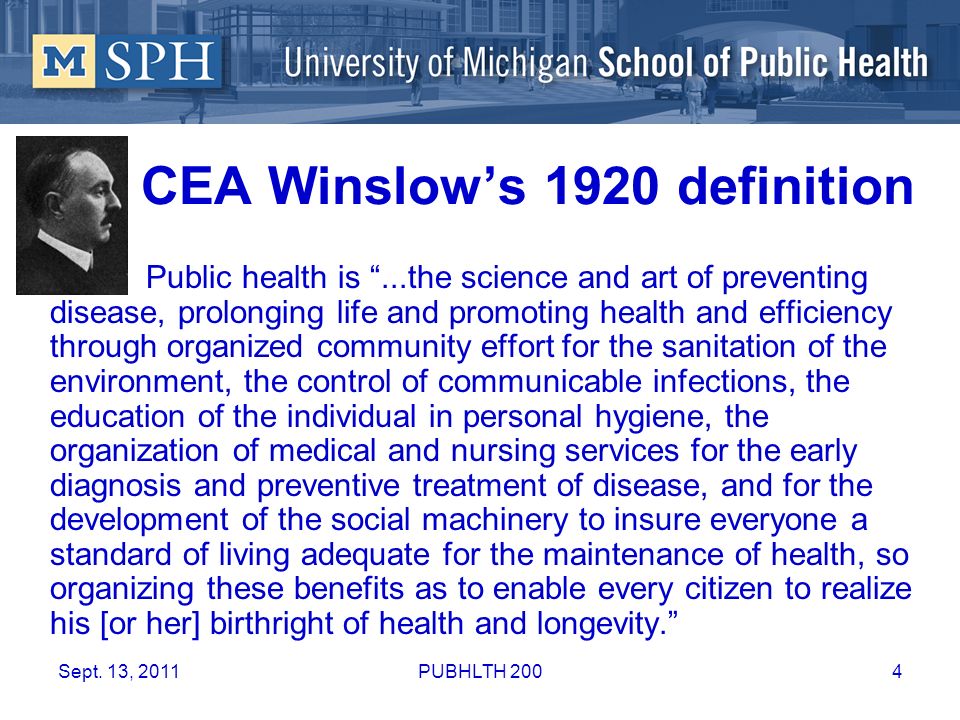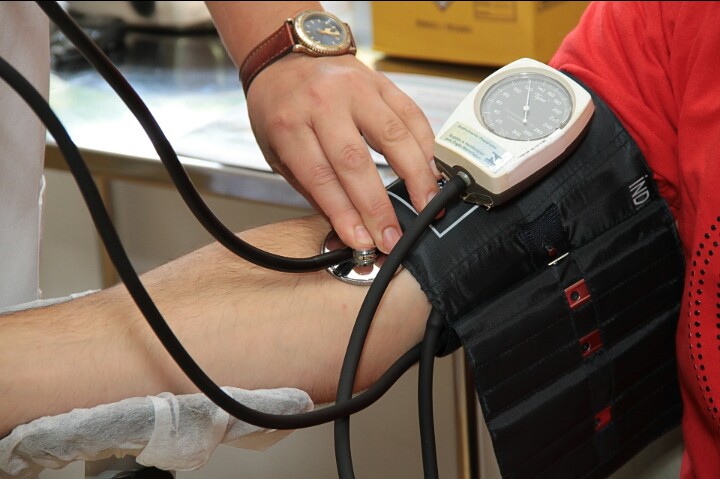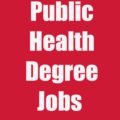Winslow 1920 Definition of Public Health
Winslow defines Public health as the science and art of preventing disease, prolonging life and promoting health and efficiency through organized community effort for the sanitation of the environment, the control of communicable infections, the education of the individual in personal hygiene, the organization of medical and nursing services for the early diagnosis and preventive treatment of disease, and for the development of the social machinery to insure everyone a standard of living adequate for the maintenance of health, so organizing these benefits as to enable every citizen to realize his [or her] birthright of health and longevity. The United Nations’ World Health Organization defines health as “a state of complete physical, mental and social well-being and not merely the absence of disease or infirmity.” (WHO 1946). Public health plays an important role in disease prevention efforts in both the developing world and in developed countries through local health systems and through international non-governmental organizations. Today, most governments recognize the importance of public health programs in reducing the incidence of disease, disability, and the effects of aging, although public health generally receives significantly less government funding compared to medicine.
More broadly Public health is the science of promoting and protecting the health of communities. It involves research, disease prevention, policy formulation and implementation and the prevention of injuries and disabilities. It is an inter disciplinary field comprising Medicine, Biology, Anthropology, Public policy, Mathematics, Engineering, Education, Psychology, Computer science, Sociology, Business and many others.Public health deals with populations rather than individuals. While Medicine is focused on treating the sick, the major goal of public health is to prevent disease through organized efforts. public health evolved from narrow disease-focused to broader population-based, multidisciplinary, and multisectoral disciplines as “collective action for sustained population-wide health improvement” . It needs contributions from various disciplines: sociologist, economist, politician, environmentalist,epidemiologist, statistician, clinician, etc. It needs to collaborate with different sectors: education, nutrition and food production,employment and income generating activities, water and sanitation, housing, etc. This means that public health is everybody’s business and responsibility, achievable only if health in a broad sense becomes a central concern of the policy-making process with prime role played by the state.
Branches of public health
There are 5 major core competencies in public health they are;
Epidemiology: is the study of how often diseases occur in different groups of people and why. Epidemiological information is used to plan and evaluate strategies to prevent illness and as a guide to the management of patients in whom disease has already developed.
Like the clinical findings and pathology, the epidemiology of a disease is an integral part of its basic description. The subject has its special techniques of data collection and interpretation, and its necessary jargon for technical terms. This short book aims to provide an ABC of the epidemiological approach, its terminology, and its methods. Our only assumption will be that readers already believe that epidemiological questions are worth answering. This introduction will indicate some of the distinctive characteristics of the epidemiological approach.
All findings must relate to a defined population
A key feature of epidemiology is the measurement of disease outcomes in relation to a population at risk. The population at risk is the group of people, healthy or sick, who would be counted as cases if they had the disease being studied. For example, if a general practitioner were measuring how often patients consult him about deafness, the population at risk would comprise those people on his list (and perhaps also of his partners) who might see him about a hearing problem if they had one. Patients who, though still on the list, had moved to another area would not consult that doctor. They would therefore not belong to the population at risk.
The importance of considering the population at risk is illustrated by two examples. In a study of accidents to patients in hospital it was noted that the largest number occurred among the elderly, and from this the authors concluded that “patients aged 60 and over are more prone to accidents.” Another study, based on a survey of hang gliding accidents, recommended that flying should be banned between 11 am and 3 pm, because this was the time when 73% of the accidents occurred. Each of these studies based conclusions on the same logical error, namely, the floating numerator: the number of cases was not related to the appropriate “at risk” population. Had this been done, the conclusions might have been different. Differing numbers of accidents to patients and to hang gliders must reflect, at least in part, differing numbers at risk. Epidemiological conclusions (on risk) cannot be drawn from purely clinical data (on the number of sick people seen).
Biostatistics.
Biostatistics is the branch of statistics responsible for interpreting the scientific data that is generated in the health sciences, including the public health sphere. It is the responsibility of biostatisticians and other experts to consider the variables in subjects (in public health, subjects are usually patients, communities, or populations), to understand them, and to make sense of different sources of variation.
In essence, the goal of biostatistics is to disentangle the data received and make valid inferences that can be used to solve problems in public health. Biostatistics uses the application of statistical methods to conduct research in the areas of biology, public health, and medicine. Many times, experts in biostatistics collaborate with other scientists and researchers.
Biostatistics has made major contributions to our understanding of countless public health issues, such as:
- Chronic diseases
- Cancer
- Human growth and development
- The relationship between genetics and the environment
- AIDS
- Environmental health (the impact and monitoring of)
Biostatistics is integral to the advancement of knowledge, not only in public health policy, but also in biology, health policy, clinical medicine, health economics, genomics, proteomics, and a number of other disciplines.
The Role of Biostatisticians
Biostatisticians are said to be the specialists of data evaluation, as it is their expertise that allows them to take complex, mathematical findings of clinical trials and research-related data and translate them into valuable information that is used to make public health decisions. The work of biostatisticians is also required in government agencies and legislative offices, where research is often used to influence change at the policy-making level.
In short, these professionals use mathematics to enhance science and bridge the gap between theory and practice.
Biostatisticians are required to develop statistical methods for clinical trials, observational studies, longitudinal studies, and genomics:
- Clinical trials: Studying the evaluation of treatments, screening, and prevention methods in populations
- Epidemiological: Studying the causes and origins of disease in humans
- Human Genetics: Studying the genetic differences associated with diseases and disease states
- Genomics: Studying the biological activity of genes as they relate to diseases and treatments
- Spatial Studies: Studying the geographical distribution of disease/risk factors
Although the work of these scientists is complex, their responsibilities include:
- Designing and conducting experiments related to health, emergency management, and safety
- Collecting and analyzing data to improve current public health programs and identify problems and solutions in the public health sector
- Interpreting the results of their findings
The validity of their research results depends on how well they can make meaningful generalizations and how well they can reproduce and apply experimental methods.
Environmental health.
Environmental health is the branch of public health that: focuses on the relationships between people and their environment; promotes human health and well-being; and fosters healthy and safe communities. Environmental health is a key part of any comprehensive public health system. The field works to advance policies and programs to reduce chemical and other environmental exposures in air, water, soil and food to protect people and provide communities with healthier environments.
Maintaining a healthy environment is central to increasing quality of life and years of healthy life. Globally, 23% of all deaths and 26% of deaths among children under age 5 are due to preventable environmental factors.Environmental factors are diverse and far reaching. They include:
- Exposure to hazardous substances in the air, water, soil, and food
- Natural and technological disasters
- Climate change
- Occupational hazards
- The built environment
Poor environmental quality has its greatest impact on people whose health status is already at risk. Therefore, environmental health must address the societal and environmental factors that increase the likelihood of exposure and disease.
The 6 themes of the Environmental Health topic area draw attention to elements of the environment and their linkages to health.
Outdoor Air Quality
Poor air quality is linked to premature death, cancer, and long-term damage to respiratory and cardiovascular systems. Progress has been made to reduce unhealthy air emissions, but in 2008, approximately 127 million people lived in U.S. counties that exceeded national air quality standards.2 Decreasing air pollution is an important step in creating a healthy environment.
Surface and Ground Water
Surface and ground water quality concerns apply to both drinking water and recreational waters. Contamination by infectious agents or chemicals can cause mild to severe illness. Protecting water sources and minimizing exposure to contaminated water sources are important parts of environmental health.
Toxic Substances and Hazardous Wastes
The health effects of toxic substances and hazardous wastes are not yet fully understood. Research to better understand how these exposures may impact health is ongoing. Meanwhile, efforts to reduce exposures continue. Reducing exposure to toxic substances and hazardous wastes is fundamental to environmental health.
Homes and Communities
People spend most of their time at home, work, or school. Some of these environments may expose people to:
- Indoor air pollution
- Inadequate heating and sanitation
- Structural problems
- Electrical and fire hazards
- Lead-based paint hazards
These hazards can impact health and safety. Maintaining healthy homes and communities is essential to environmental health.
Health services administration.
The field of public health administration concerns itself with the administration, leadership, and management of health care systems, such as hospitals, networks, and public health systems. A Master of Public Health Administration (MPHA) graduate is classed as a health care professional. Those who hold an MPHA degree can either be generalists, who hold responsibility for the management of an entire facility; or specialists, who hold responsibility for the management of a specific department.There are a number of important reasons why this is such an important career:
- You will be able to complete a social mission and make a real difference to the world. The decisions you make can lead to health improvements for millions of everyday people. It is likely, if you are interested in this field, that you feel socially responsible and that you genuinely care about the health outcomes of the community.
- You have a great number of career opportunities. The health care industry itself is the largest in our country, as well as the second largest employer. Eleven million individuals work in the industry at present, and almost every new job in the private sector that was developed over the past five years is related, in some way, to health care. Furthermore, you can work across the different sectors and in either rural or urban communities.
- The earning potential is very good. While it is likely that you have entered this field because you feel it is your social duty, the fact that you can earn a six figure income is also a nice bonus.
- Your career will be very flexible because you can go in a lot of different directions. You don’t have to work specifically in health care management, choosing instead to work in financial institutions, the pharmaceutical industry, federal agencies, long term care facilities, NGOs, disaster relief agencies, and more. You will also have a number of strong transferable skills, which means that you can change jobs at any point as well.
- You will have far more opportunities to manage and to advance your career.
- Your role will be highly visible in the community, as well as being highly valued. Essentially, you will be a do-gooder, and this will be appreciated by the people on the receiving end.
- You will have the opportunity to continuously improve yourself. Health care management is a fluid role, which means that you will constantly have to study in order to keep up-to-date with developments.
Behavioral science/health education.
The social and behavioral health sciences play an important role in public health policies and decisions, as the work professionals in this field do is focused on identifying and analyzing the social determinants and behavioral risk factors associated with any number of public health issues. They then use this information to better understand how to promote and achieve healthy behaviors within certain communities and populations. Our world is constantly being driven by advances in our understanding of human behavior— socially, politically, and economically. Psychology and neuroscience have given us an increasingly complex understanding about how people think and feel, and how they make decisions. This has allowed us to better design and deliver products, services, and policies. It comes as no surprise, then, that classical approaches to areas such as finance, economics, and public policy are now being influenced by behavioral finance, behavioral economics, and behavioral public policy.
These insights have greatly changed public health policies and programs by allowing public health professionals to understand how behaviors, social factors, and environmental factors affect the way public health programs are best administered and delivered.
Therefore, social and behavioral health sciences involve:
- Understanding the psychosocial, behavioral, community, and societal influences on the health of a specific population, including those who are disadvantaged
- Creating interventions that eliminate specific barriers to health across the lifespan
- Understanding how biological factors influence health, illness, and recovery
- Identifying risk factors that result in adverse health outcomes and strategies for promoting health and preventing disease
Professionals in the social and behavioral health sciences must find effective solutions to widespread public health problems, which require planning, implementing, and administering programs that take into account individual behaviors and existing disparities. These researchers, administrators, and program developers use both quantitative and qualitative research methods to help them make decisions with regard to program planning and evaluation.
Typical duties of professionals in the social and behavioral health sciences include:
- Accessing and analyzing data to assess specific public health problems
- Applying social and behavioral theories to develop effective public health intervention programs
- Developing evaluation trials that assess the efficacy of public health interventions
- Communicating their findings to policymakers and to the public
- Advocating for the implementation of evidence-based public health programs
Most professionals working in the social and behavioral health sciences focus their careers on research related to contemporary public health issues, such as:
- Obesity
- Diabetes
- Tobacco cessation
- Mental health
- HIV/AIDS
- Domestic violence
- Substance abuse
- School health
- Health equity
- Adolescent health
- Maternal and child health
- Physical activity and wellness
- Injury prevention
Focus Areas of Public Health Practice
In public health practice, there are 3 major domains. These are;
Health Protection
- Infectious diseases
- Radiation
- Chemicals and poisons
- Environmental health hazards
- Emergency response
Improving services
- Clinical governance
- Clinical effectiveness
- Efficiency
- Equity
- Service planning
- Audit/evaluation
SEE: Equity Vs Equality: Understanding The Difference
Health Improvement
- Lifestyles
- Family/community
- Employment
- Surveillance and monitoring of specific diseases and risk factor
- Inequalities
- Education
- Housing
- Lifestyles
SEE: Public Health Surveillance: Steps, Types, Importance
Responsibilities of Public Health Professionals
As custodians of public health and trust, professionals in the field of public health are trained to carry out critical services geared towards promoting safety, preventing diseases and improving health. The responsibilities of public health professionals include;
- Educate, Empower and Inform- Public health professionals are responsible for health enlightenment and awareness creation on issues such as drug addiction, obesity, smoking, STDs etc.
- Monitoring and Evaluation – Public health professionals investigate and monitor disease patterns and other health problems in the community.
- Mobilization- They are critical stakeholders in community health as such they are involved in the mobilization of the community for intervention projects and other partnerships aimed at solving community based health challenges.
- Policy Development – Public health practitioners are also involved in the development of policy and plans that compliments community health efforts.
- Law Enforcement – Public health laws and regulations especially those relating to food safety and competence of public health and personal health care workforce are handled by public health professionals
- Research – As a discipline, public health relies heavily on research and tools of research. Public health professionals are consistently striving to find innovative solutions to current health problems.
Where do Public Health Professionals Work?
Public health professionals work in government agencies that deals with issues relating to public health and safety. Examples include Food and Drug Administration (FDA), National Agency for Food Drug Administration and Control (NAFDAC), Center for Disease Control (CDC) amongst others. They also work in International Agencies and Non-profit organization such as UNICEF, Red Cross, Save the Children and others. In addition, public health professionals form the back bone of state and local health departments, health care organizations, health insurers and pharmaceutical companies.Also Read : What is Public Health Policy









You should take part in a contest for probably the greatest blogs on the web. I’ll advocate this web site!
Thanks a lot for providing individuals with an exceptionally nice chance to check tips from here. It’s usually very sweet and full of a great time for me and my office fellow workers to visit your site not less than 3 times a week to see the fresh guidance you have got. And definitely, we’re always satisfied with your breathtaking information served by you. Selected 3 areas in this post are basically the most beneficial I have ever had.
My spouse and i have been absolutely excited when Jordan could finish off his survey from the precious recommendations he came across out of your web site. It is now and again perplexing to just always be making a gift of tips and hints which often many others may have been selling. And we also know we now have the writer to appreciate for that. These illustrations you have made, the straightforward web site navigation, the friendships you will aid to create – it is all extraordinary, and it’s assisting our son and the family know that that situation is satisfying, and that’s extraordinarily vital. Many thanks for all the pieces!